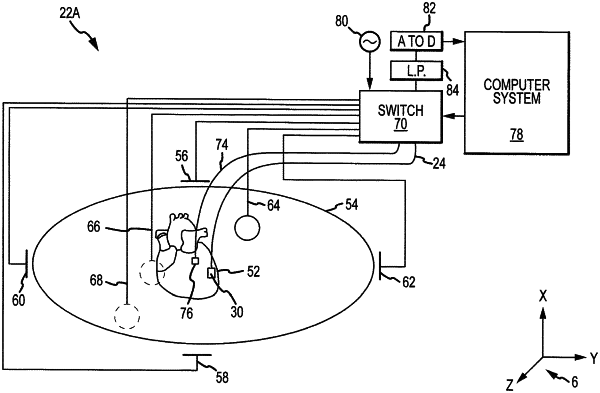| CPC A61B 5/0538 (2013.01) [A61B 5/062 (2013.01); A61B 5/6833 (2013.01); A61B 2018/00875 (2013.01)] | 18 Claims |

|
1. A method for use in predicting impedance measurements and identifying a location of a medical device, comprising:
driving a plurality of surface patch electrodes associated with a three-dimensional space to generate an impedance field in the three-dimensional space;
obtaining impedance measurements for one or more electrodes, separate from the surface patch electrodes, disposed within the three-dimensional space in response to the driving of the plurality of surface path electrodes; and
mapping independent impedance potential fields of a portion of the plurality of surface patch electrodes that are non-driven to the impedance measurements to generate an impedance model of the impedance field;
receiving a predicted location of a catheter electrode from a catheter model that models a shape of a catheter in the three-dimensional space;
generating predicted impedance values for the predicted location of the catheter electrode in the three-dimensional space using the impedance model, wherein the predicted location of the catheter electrode is received from the catheter model;
obtaining measured impedance values for the catheter electrode as disposed in the three-dimensional space;
based on the predicted impedance values and the measured impedance values, generating calculated impedance values for the catheter electrode in the three-dimensional space;
updating the impedance model of the impedance field based on the predicted impedance values and the measured impedance values, wherein the updated impedance model is subsequently utilized to generate subsequent predicted impedance values for a predicted location of the catheter electrode, wherein the above steps of the method are performed without transformation from impedance measurements to a magnetic-based coordinate system; and
outputting a location of the catheter electrode generated based on the calculated impedance values to a display.
|